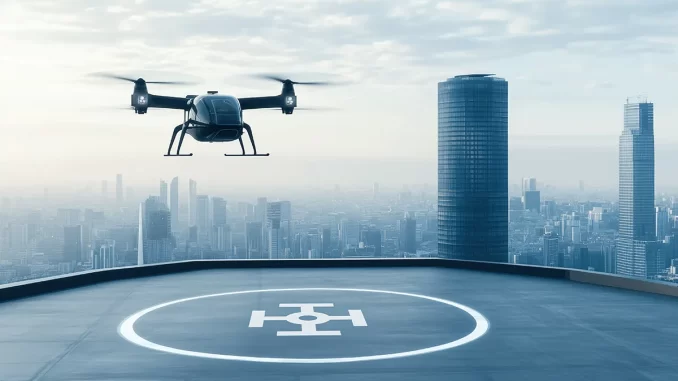
The Federal Aviation Administration (FAA) today issued a final rule for the qualifications and training that instructors and pilots must have to fly aircraft in the “powered-lift” category, which have characteristics of both airplanes and helicopters.
According to an FAA press release:
“The rule also addresses their operational requirements, including minimum safe altitudes and required visibility. The rule is the final piece in the puzzle for safely introducing these aircraft in the near term. The opportunities for the use of powered lift operations are far reaching, from transporting passengers in urban areas and short-haul operations such as air ambulance services and cargo operations to potentially serving smaller communities over time.”
“The FAA will continue to prioritize the safety of our system as we work to seamlessly integrate innovative technology and operations. This final rule provides the necessary framework to allow powered lift aircraft to safely operate in our airspace,” said FAA Administrator Mike Whitaker. “Powered lift aircraft are the first new category of aircraft in nearly 80 years and this historic rule will pave the way for accommodating wide-scale Advanced Air Mobility (AAM) operations in the future.”
The FAA previously determined it could certify powered-lift using existing regulations and updated other regulations so air taxis could be used commercially. Last year the agency released a blueprint for how Urban Air Mobility vehicles will operate, which is a key element in maturing the overall AAM concept.
A new pilot-training and qualifications rule was needed because existing regulations did not address this new category of aircraft, which can take off and land vertically like a helicopter and fly like an airplane during cruise flight, says the FAA. The rule provides a comprehensive framework for certifying the initial cadre of powered-lift instructors and pilots.
The rule:
- Makes changes to numerous existing regulations and establishes a Special Federal Aviation Regulation (SFAR) with new requirements to facilitate instructor and pilot certification and training.
- Applies helicopter operating requirements to some phases of flight and adopts a performance-based approach to certain operating rules.
- Allows pilots to train in powered-lift with a single set of flight controls; legacy rules require two flight controls – one for the student and one for the instructor.
According to (an edited) blog from Mike Whitaker
“Our new rule makes changes to numerous existing regulations and establishes a Special Federal Aviation Regulation (SFAR) with new requirements to facilitate instructor and pilot certification and training, and operational requirement for the aircraft themselves. This rule will be in effect for 10 years, and we’ll take lessons learned to create permanent regulations in the future.
We made this rule flexible and not overly prescriptive because we anticipate a lot of diversity among powered-lift designs. The rule applies helicopter operating requirements to some phases of flight and adopts a performance-based approach to certain operating rules.
While developing the final rule, we also carefully considered the public comments we received on the proposal. And we made some significant changes based on them.
One is allowing pilots to train in powered-lift with single flight controls and expanded use of flight simulators; legacy rules require two flight controls — one for the student and one for the instructor.
“Getting these aircraft into service is now up to the manufacturers and operators. Manufacturers must build aircraft that meet our strict safety standards, and some are very close. We’ve engaged early with them in the design and certification process to ensure they have all the resources needed to be successful.
Operators will need to figure out what makes financial sense; the market will determine where they’ll fly and what kind of operations they’ll conduct. Just like the first automobiles and cell phones, it could take time for these aircraft to become commonplace. But as more and more are produced, I think we’ll see them everywhere.
“When they do take to the skies, we envision they will initially fly routes much as helicopters do today. They’ll use existing routes and infrastructure such as helipads and early vertiports. Pilots will communicate with air traffic controllers where required.”
For more information
https://www.faa.gov/newsroom/new-rule-faa-ready-air-travel-future

